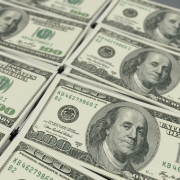What was the Bretton Woods gold standard system?
Topic of Study [For H2 History Students]:
Paper 1: The Development of the Global Economy (1945-2000)
Section B: Essay Writing
Theme II Chapter 1: Factors for the growth of the global economy (1945-1971)
Historical Context: The end of the Gold Standard
In 1913, the Federal Reserve introduced the Gold Standard. A law was passed, requiring the Federal Reserve to hold gold equal to forty percent of the value of the currency it issued. At the same time, it had to convert these dollars into gold at a fixed price of $20.67 per ounce of pure gold. Back then, the Federal Reserve held more gold to back the issued currency. This was known as ‘free gold’.
The quantity of ‘free gold’ could be influenced by the prevailing interest rates. For instance, higher interest rate encouraged Americans to deposit in banks, facilitating movement of gold from households to the Federal Reserve.
However, the Great Depression of the 1930s saw substantial outflow of gold from the Federal Reserve. Both individuals and business owners preferred to hold gold instead of currency. This economic crisis even influenced foreign investors to reduce their demand for USD as well. Over time, the quantity of ‘free gold’ fell, making it difficult for the Federal Reserve to honour its commitment to convert currency to gold. As a result, the Roosevelt administration suspended the Gold Standard on 20 April 1933.
The reaction of the global currency markets was instantaneous. In one day the dollar lost 10 percent of its value relative to the pound sterling, and 8 percent relative to the French franc. […] Commodity markets also reacted with force, reflecting the sentiment among market participants and the general public that getting off gold, and implementing some (or all) of the policies in the Thomas Amendment, would help raise prices and bring deflation to an end.
An excerpt taken from “American Default: The Untold Story of FDR, the Supreme Court, and the Battle over Gold” by Sebastian Edwards.
Bretton Woods Conference: System Renewed
During the Bretton Woods Conference in July 1944, the USA contemplated on replacing the Gold Standard with a new international monetary system to achieve economic stability. In particular, a system that fixed the US dollar (USD) to gold at the parity of USD$35 per ounce. All other foreign currencies had fixed, but adjustable, exchange rates to the USD.
Historically, countries sought credibly to commit not to change the value of their currencies by pegging them to a particular amount of precious metals – either gold or silver or a combination of the two. As the volume of global trade increased in the late nineteenth century, more and more countries joined the club of advanced nations that fixed their currencies to a given quantity of gold. When they did so, they effectively promised to maintain reserve of gold (or of currencies like the British pound that were considered as good as gold) and allow holders of their currencies to redeem bills at will at the fixed exchange rate.
An excerpt taken from “The Bretton Woods Agreements: Together with Scholarly Commentaries and Essential Historical Documents” by Naomi Lamoreaux and Ian Shapiro.
In 1958, the Bretton Woods System was functional. Countries used USD as the international currency for economic activities. The USA honoured its commitment to ensure gold convertibility. However, this commitment was later put to the test when the USA experienced twin deficits.
What can we learn from this article?
Consider the following question:
– How far do you agree that the Golden Age of Capitalism was mainly the result of the Bretton Woods System?
Join our JC History Tuition to learn more about the Global Economy. The H2 and H1 History Tuition feature online discussion and writing practices to enhance your knowledge application skills. Get useful study notes and clarify your doubts on the subject with the tutor. You can also follow our Telegram Channel to get useful updates.
We have other JC tuition classes, such as JC Math Tuition and JC Chemistry Tuition. For Secondary Tuition, we provide Secondary English Tuition, Secondary Math tuition, Secondary Chemistry Tuition, Social Studies Tuition, Geography, History Tuition and Secondary Economics Tuition. For Primary Tuition, we have Primary English, Math and Science Tuition. Call 9658 5789 to find out more.











